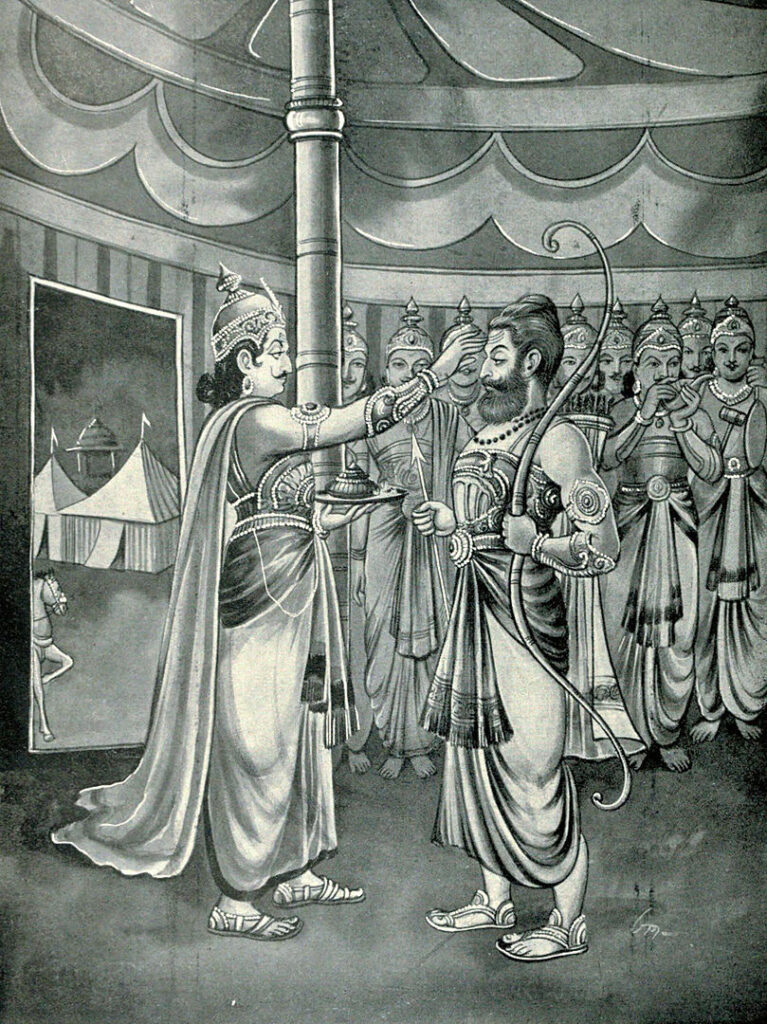A Summary of the Drona Parva

Note: The Drona Parva is the 7th parva of the Mahabharata. It describes the period of the battle when Drona was the commander-in-chief of the Kaurava army. The Drona Parva consists of 8909 shlokas (verses) divided into 170 sections.
This parva begins with Drona being given the command of the Kaurava army since the previous commander, Bhishma, lay badly wounded on the battlefield.
Drona’s loyalty to the Kauravas had been questioned by Duryodhana ever since the latter came to power. So, in an attempt to please Duryodhana, Drona vowed to capture Yudhishthira.
After this comes the incident of Arjuna’s retreat from the battlefield to pursue the Sansaptakas.
Subsequently, Arjuna overpowered the immensely strong Bhagadatta along with his elephant, Supritika.
While Arjuna was away, his teenage son, Abhimanyu, was slain by Jayadratha as he fought alone and heroically with several Kaurava maharathas in the Chakravyuha.
Angered by his son’s death, Arjuna single-handedly destroyed seven akshauhinis of the Kaurava army. After routing the Kaurava army, Arjuna pursued and slew Jayadratha (by whose hands Abhimanyu was killed).
Then the mighty Bhima and the valiant chariot warrior, Satyaki, entered the Kaurava ranks in search of Arjuna.
Following this, the remaining warriors of the Sansaptakas were also slain.
Several great warriors lost their lives in this parva. They included Alambysha, Srutayus, Jalasansha, Shomadatta, Virata, Drupada, Ghatotkacha, and several others.
Then came of the incident of the slaying of the great teacher and warrior: Drona.
When Ashwattham heard the news about his father’s fall, he became angry beyond measure and discharged an extremely dangerous weapon called the Narayana.
This parva also contains the story of the glorious Rudra in connection with the burning of the three cities.
The Drona parva ends with the arrival of the learned son of Sage Parasara (Vyasa Muni) who enlightened everyone by telling them about the true glory of Arjuna and Krishna.
Previous: A Summary of the Bhishma Parva
Next: A Summary of the Karna Parva
Credits
The featured image is credited to Ramanarayanadatta astri and is available in the public domain under a creative commons license.
